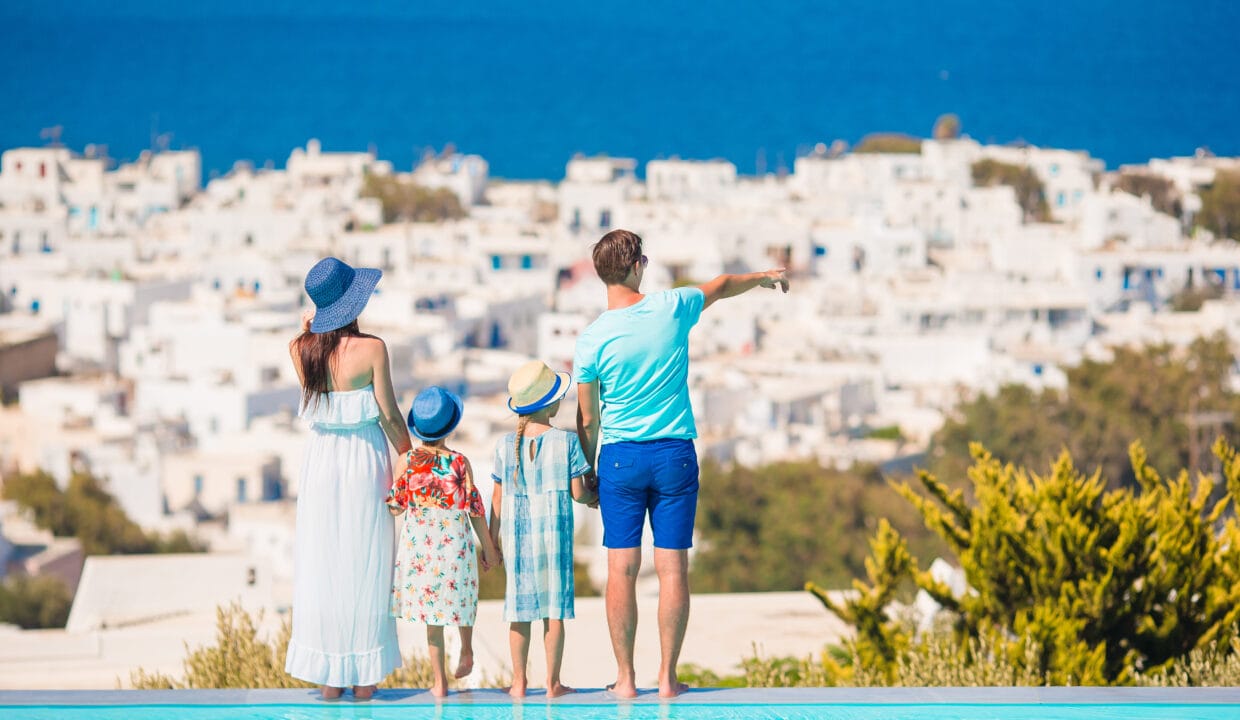PRIVACY POLICY
Declaration of commitment with respect to personal data protection
Welcome to www.ellasestate.com (hereinafter referred to as the "Website").
The Website has been created by the company "ELLAS ESTATE A. E.» (hereinafter referred to as “ELLAS ESTATE” or the "Company"), which is based in Thessaloniki, Politechniou 33, 54626, in order to provide information and services to visitors/users of the Website (hereinafter referred to as "Users").
ELLAS ESTATE is the Data Controller for the processing of personal data received through the use of the Website, in accordance with the General Data Protection Regulation 2016/679 of the European Union (hereinafter referred to as "GDPR"). In this Statement, we provide you with information regarding the type of personal data we collect, how and for what purposes we collect it, the third parties with whom we share this data, and your rights.
Types of personal data we process
The personal data that we collect and further process when you browse the Website is as follows:
Technical information during your visit to the Website, such as IP address, date and time of visit, browser and operating system type, device model, and other information collected through cookies and similar technologies related to the analysis of your browsing on the Website. For more details about the information collected through cookies and similar technologies, please visit the relevant section.
If you subscribe to our Company's newsletter, we collect your e-mail address and your full name with your consent. In any case, you have the possibility to withdraw your consent at any time either by clicking on the "unsubscribe" option in the body of the email you receive from the "Company" or by contacting the Company directly at the contact details listed on the Website. Please note that if you are under 15 years of age, consent must be provided or approved by your parent or guardian.
If you wish to contact us, we collect data included in the respective contact form, such as name, surname, email address, mobile phone number, and information regarding your request.
Why do we process your personal data?
In the context of using the Website, the Company processes your data in accordance with the following purposes and lawful bases:
Α. Legitimate interest
In order to safeguard and achieve the Company's legitimate interests, the Company processes the personal data concerning you mentioned above in order to ensure the uninterrupted, correct and secure operation of the Website, to keep data backups and to ensure business continuity issues in general.
Also, based on our legitimate interest, we manage any general communication we receive from you to ensure that we respond promptly and effectively to any request or query you make to us when you submit a contact form through the Website or our other official channels.
Β. Consent
If you wish to receive newsletters and/or important corporate announcements from us, you can give your consent through a special field on the Website and subscribe to the list of recipients of the Company's specific informative messages. In this case, we will process your full name and the e-mail address you have provided in order to send you news and updates about the Company and/or other Group companies. You have the possibility to withdraw this consent at any time, either by selecting the "unsubscribe" link at the bottom of each such communication, or by sending us a request to the contact details indicated in the relevant section below.
In addition, if you give your consent to the use of technologies such as cookies, information about you is automatically collected in accordance with the Website's Cookies Policy for analytics, personalisation and/or advertising purposes. You can change your cookie options and withdraw your consent at any time through the Website's Cookies Policy.
C. Legal Obligation
We are obliged to process your requests for the protection of your personal data and overall to comply with any requests for personal data we receive from relevant police, judicial or other supervisory authorities.
Who do we share your data with?
In order to best fulfil the above processing purposes, the Company may share personal data with the following categories of its partners:
Website support and management companies.
Social media management companies.
Companies that carry out the tasks of Data Protection Officer.
Other Group companies with whom we cooperate to fulfil the above purposes.
As well as any other administrative, judicial or public authority or, in general, any legal or natural person to whom the Company may have a relevant obligation or right to communicate such data under a law or court decision.
The Company has taken all necessary measures to ensure that its staff and partners are specifically authorised for these purposes and are fully bound by the confidentiality and obligations provided for in the legislation regarding the collection and further processing of your data.
How does the Company protect personal data?
Our Company has taken all appropriate organisational and technical measures, in accordance with technological standards and applicable laws and regulations, to ensure that the processing of personal data, whether by itself or by third parties on its behalf, is lawful, appropriate and has an appropriate level of security to prevent any unauthorised or accidental access, processing, deletion, alteration or other use of such data.
For how long will your data be kept?
The personal data processed by the Company are kept for as long as necessary to fulfil the purpose of each processing operation. At the end of this period, the data will be deleted, unless otherwise specified by law or if this is required to establish, exercise or support the Company's legal claims.
In particular, your data from the subscription to the newsletter will be kept until you withdraw your consent.
What are your rights?
In any case, we would like to inform you that, according to the legislation in force, you have and can exercise the following rights after confirming your identity:
The right of access to your personal data, as well as to the information related to the processing,
The right to rectification of inaccurate and completion of any incomplete data,
the right to be informed of any inaccurate or incomplete data or incomplete or incomplete information concerning you, the right to have your personal data corrected or rectified, and the right to have it deleted ('right to be forgotten'),
the right to the restriction of the processing of your data in the cases expressly provided for by law,
the right to the portability of your data in a structured, commonly used and machine-readable format (e.g. USB), either to you or to another controller,
your right to object to the processing based on our legitimate interest as set out above,
the right to withdraw any consent you may have given, directly and free of charge, in the manner described above.
The exercise of one of the above rights is done by submitting a written request to our Company, to which we undertake to respond within one (1) month from receipt. This period may be extended for two (2) additional months, taking into account the complexity of your request and the number of requests received in general.
Furthermore, our Company undertakes to inform you, without undue delay, of any breach of your personal data which may put your rights and freedoms at high risk and provided that it does not fall within one of the exceptions expressly provided for by law.
Contact details
For any questions, clarifications or requests regarding the protection of your personal data in the context of the operation of the Website, you can contact us at info@ellasestate.com .
Right to lodge a complaint
In case you believe that we have not adequately satisfied your request and that the protection of your personal data is in any way affected, you may lodge a complaint via a dedicated portal to the Personal Data Protection Authority (Athens, 1-3 Kifissia Avenue, PC 115 23 | tel. +30 210 6475600). Detailed instructions for filing a complaint are provided on the Authority's website.
Third party websites
The Website provides the ability to access third party websites through appropriate links. These links have been placed solely for the convenience of the Users of the Website, while the websites to which they refer are subject to the respective terms of use and Privacy Statements of those websites. The placement of the links does not constitute an indication of approval or acceptance of the content of the respective websites by the administrator of the Website, who is not responsible for their content or for the privacy practices or the accuracy of the materials contained therein. The Company has no control over the websites owned by third parties or their content that are visited through or available on this Website and, as such, the Company does not endorse, sponsor, advise or otherwise accept any responsibility for such websites or their content. If the User decides to use, through the links of the Website, any of the third party websites, he/she accepts that he/she does so at his/her own risk.
You can find more information about the collection of cookies in the Cookies Policy.
Cookies Policy
This website uses cookies. We use cookies to personalise content and ads, to provide social media features and to analyse our traffic. We also share information about your use of our site with our social media, advertising and analytics partners who may combine it with other information that you’ve provided to them or that they’ve collected from your use of their services.
Cookies are small text files that can be used by websites to make a user's experience more efficient. The law states that we can store cookies on your device if they are strictly necessary for the operation of this site.
For all other types of cookies we need your permission. This site uses different types of cookies. Some cookies are placed by third party services that appear on our pages.
You can at any time change or withdraw your consent from the Cookie Declaration on our website.
Without the use of cookies, our website will treat you as a completely new visitor every time you access it. Except for essential cookies, all cookies will expire after 30 days. You can block cookies by activating the setting on your browser that allows you to refuse the setting of all or some cookies, however such blocking may compromise your access to certain parts of our website.
Terms of Use
Welcome to https://www.ellasestate.com. The website or/and Portal https://www.ellasestate.com (hereinafter "Website") has been created by the company "ELLAS ESTATE A.E.", in order to provide information and services to its visitors/users (hereinafter "Users"). The Users have access and make use of the Website exclusively for personal, informative and non-commercial purposes. By using this Website, you agree to the Terms of Use (hereinafter "Terms"). By accepting the Terms, the User declares that he/she is at least eighteen (18) years old. If the User's age is less than eighteen (18) years old, but more than thirteen (13) years old, he/she has the right to use the services of the Website only under the supervision of a parent or guardian, who accepts the Terms thereof. In any case, ELLAS ESTATE A.E. is not be liable for such use.
Please read carefully these Terms before you use the Website. ELLAS ESTATE A.E. reserves the right to amend the Terms.
CONTENTS
Intellectual property rights
Third-party websites and content
Limitation of liability - Disclaimer
Hyperlinks
Advertisements
Applicable law - Other terms
1. INTELLECTUAL PROPERTY RIGHTS
The intellectual property rights on the content of the Website, including, but not limited, all documents, archive, texts, images, graphics, trademarks (commercial-services), components, the Website code and its general appearance, are intellectual and industrial property of ELLAS ESTATE A.E., or the Group of companies to which it belongs, unless otherwise provided by law, and they are protected by the relevant provisions of the Greek, European and International Law. The reproduction of the Website for commercial purposes, non-personal use, conversion/ copying / rental / lending / transmission and broadcasting without license is prohibited. The sale or distribution of Website material for profit purposes is prohibited.
Products or services bearing third-party trademarks, which are mentioned on the Website, are intellectual and industrial property of these third parties and therefore third parties bear their own responsibility.
The content of the Website is available to Users for personal use.
For any further request please contact info@ellasestate.com.
2. THIRD PARTY WEBSITES AND CONTENT
The Website provides access to third-party websites through appropriate hyperlinks (links). These links are intended solely for the convenience of Users of the Website, and the websites to which they refer are subject to their respective terms of use. The display of the links is not a sign of approval or acceptance of the content of the respective websites by the webmaster, who does not bear any responsibility for their content as well as for the privacy practices or the accuracy of the website material. ELLAS ESTATE A.E.has no control over the websites held by third parties or their content, which is accessed or made available through this website and, therefore, ELLAS ESTATE A.E. does not endorse, sponsor, or otherwise accept any responsibility for such websites or their content. The User bears full responsibility for browsing any third-party websites through the links provided in the Website.
3. LIMITATION OF LIABILITY – DISCLAIMER
The content of the Website is “as is”, and ELLAS ESTATE A.E. does not provide any warranty, express or implied, as to the accuracy, completeness, correctness, timeliness, commerciality, non-infringement, or suitability of this content for any use, application and/or purpose. ELLAS ESTATE A.E. under no circumstances, including negligence, is liable for any kind of loss or damage the User has suffered or may suffer from or in connection with the webpages, services, choices and content of the Website, which he/she uses on his/her own initiative and to the knowledge of these Terms. In addition, ELLAS ESTATE A.E. does not guarantee that the webpages, services, options and contents will be provided without interruption or errors and that the errors will be corrected or that all the queries will be answered. Similarly, ELLAS ESTATE A.E. does not warrant that the Website or any other related website or servers through which the content is made available to the Users is provided without “viruses” or other harmful components. The cost of contingent corrections or services is borne by the User and by no means by the Company.
By transmitting or uploading any content on the Website https://www.ellasesate.com (hereinafter “Content”), the User grants ELLAS ESTATE A.E.. a permanent, unlimited, irrevocable, free of charge, worldwide right to: use, reproduce, adapt, present, perform, modify, transmit, translate, distribute and create derivative works of the Content· create, offer for sale, sell, lease or otherwise distribute and create derivatives of the Content· and execute any method by incorporating the Content (including the subrogation of any of the above). Furthermore, the User acknowledges and guarantees to ELLAS ESTATE A.E. the right, title and / or power to grant such a right to ELLAS ESTATE A.E.. ELLAS ESTATE A.E. may choose not to publish the Content that the User sends or delivers electronically (upload). If ELLAS ESTATE A.E.. shall choose to publish the Content that the User sends or delivers electronically (upload), ELLAS ESTATE A.E. may, at its sole discretion, withdraw the published information for any reason and without prior notice.
ELLAS ESTATE A.E. may use the information it collects and/or receives for the purpose of avoiding any illegal activity or activities which threaten its network or jeopardize the provision of the Website.
4. HYPERLINKS
The creation of a hyperlink to the Website is permissible, provided that it is not used to mislead the consumer or damage the reputation of ELLAS ESTATE A.E. or the Group of Companies to which it belongs, and it does not display the contents of the Website as part of another website other than the Website (such as framing techniques). In addition, the use of the logos of ELLAS ESTATE A.E., as presented on https://www.ellasestate.com, for the purpose of creating a hyperlink to this Website, without the express and written permission of ELLAS ESTATE A.E. is prohibited.
5. ADVERTISEMENTS
The website https://www.ellasestate.com may contain advertisements of ELLAS ESTATE A.E. or third-party companies, as well as display other material with promotional content and purpose.
In the case of third-party advertisements, ELLAS ESTATE A.E. does not have any control over the content of these ads and therefore does not bear responsibility towards users for the content of such advertisements with respect to any illegal acts or omissions, inaccuracies or inability to comply with the laws and regulations of any country or the European Union related to the content of these ads. This responsibility lies solely with advertisers, sponsors and/or creators of the displayed promotional material.
6. APPLICABLE LAW - OTHER TERMS AND CONDITIONS
The Terms and Conditions of the Website, as well as any modification or change thereof, are governed by national law, European law and the relevant international treaties. Any provision of the Terms found to be inconsistent with the above legal framework or rendered inoperative shall automatically cease to be effective and be removed from the Terms without undermining the validity of the other Terms. The Terms constitute the overall agreement between ELLAS ESTATE A.E. and the User and shall only be binding on them. No modification of the Terms will be taken into account and will form part of this agreement, unless it is in writing and it has been incorporated into the present agreement.
It is expressly agreed that any dispute arising from the application of the Terms and the general use of the Website by the User, provided that it is not resolved in a friendly manner, is governed by Greek law and is subject to the jurisdiction of the Courts of Athens.
Should you wish to contact the Website Administrator, please send your email at info@ellasestate.com.


